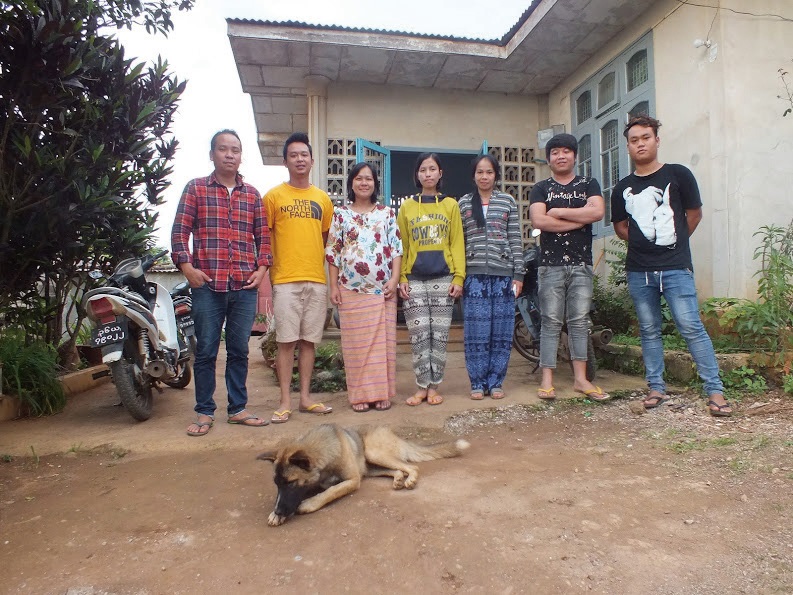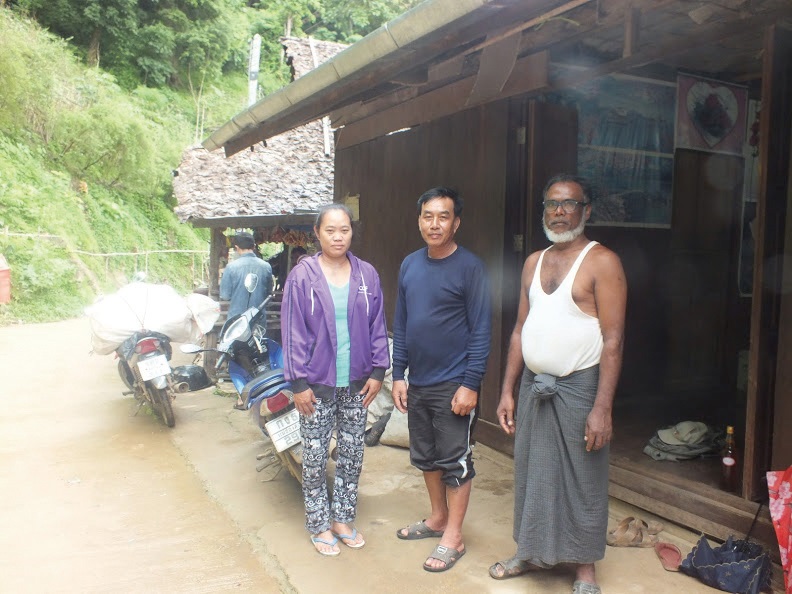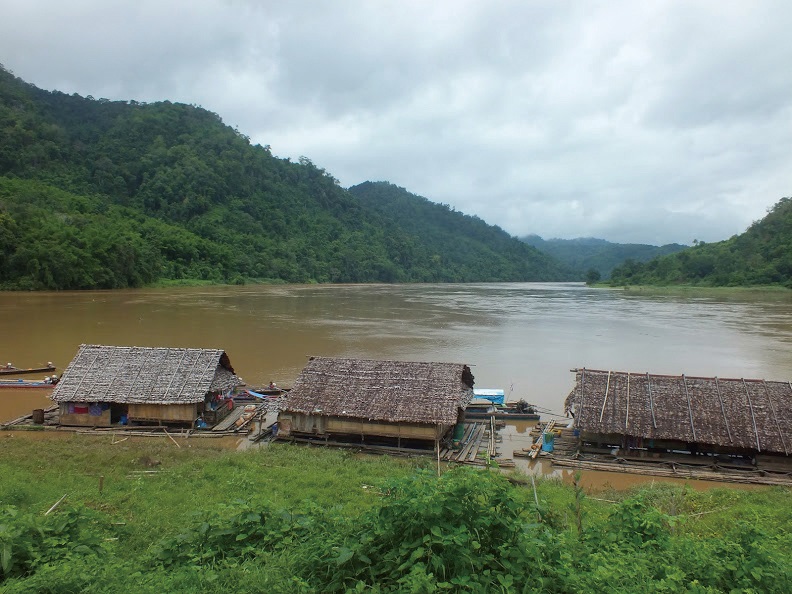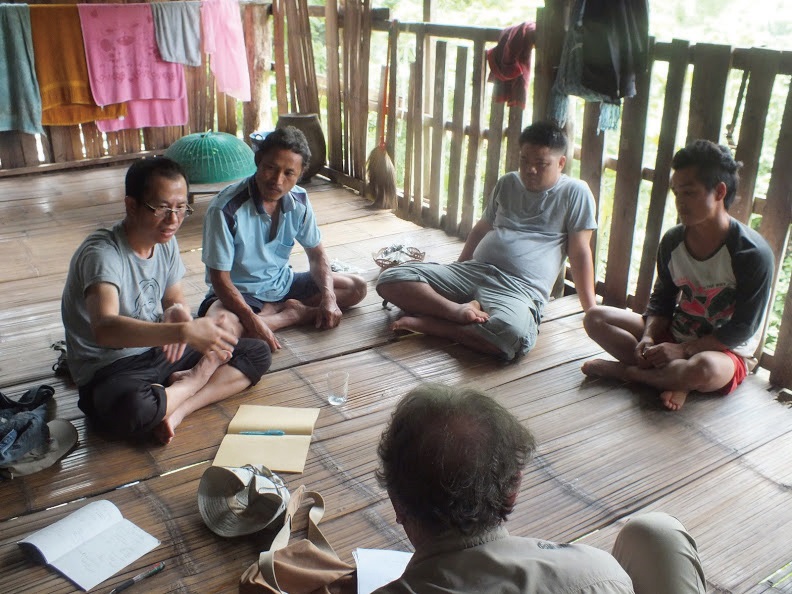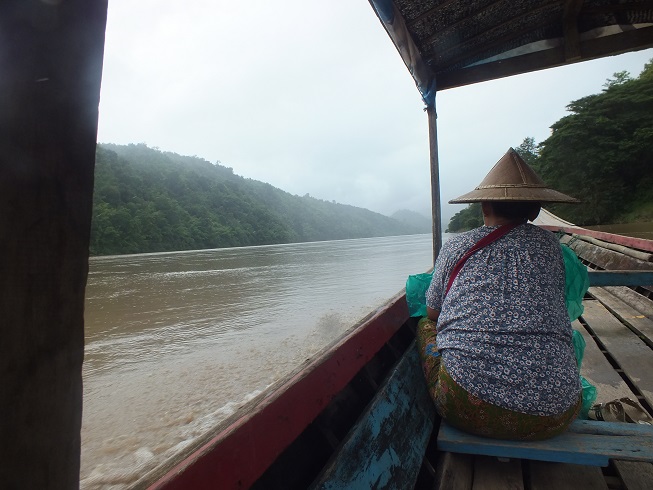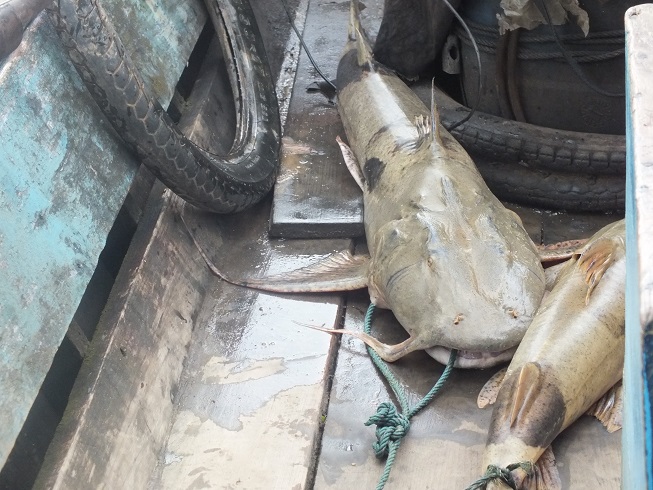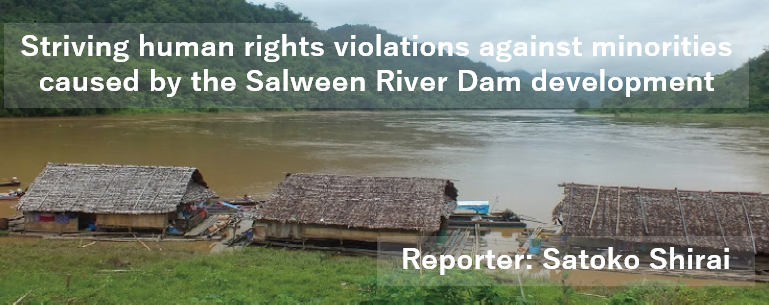
Introduction
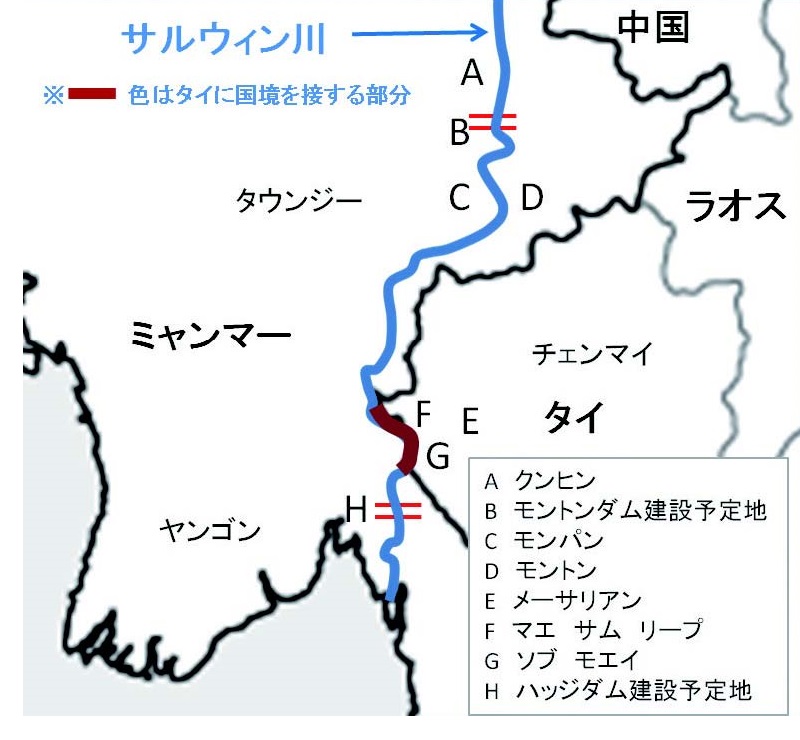 The Salween River Dam development area.
The Salween River Dam development area.
From the 27th of July through the 5th of August, 2016, I travelled to Myanmar and Thailand for visiting Ms.Nang Shining of Mong Pan Youth Association (MYA from the following) in Myanmar, which is the recipient of our 2016 grant, and Mr.Mr.Loafang Bundidterdsakul of Thailand, who had been approved as a training grant. Both support the ethnic minorities at the mercy of the intense dam project on the Salween River (an international river that flows from Tibet to China and Myanmar and parts of Thailand) in their respective positions and strengths.
Salween River is known as "the largest and last river in Southeast Asia without dams," but there are currently five massive dam projects (according to the local Salween Watch News, "at least 15 are planned or under construction”).
This year, MYA, produced a documentary called “The Voice of Nam Khone” (Nam Khone is another name for the Salween River.). This documentary was made, mainly among the youth of ethnic minorities from the affected basin of Mong Tong Dam, to encourage residents to act in thinking about the dam development in their river. As a lawyer, Mr.Laofang provides free legal support for ethnic minorities living in the area.
Visit to MYA Office in Taunggyi, Myanmar
Myanmar has achieved remarkable economic development since its democratization in 2011. However, in rural areas, the ironic reality is that fighting between the central government and armed groups from the ethnic minorities continues, which is the cause of the suspension of dam construction plans.
The access to these areas is still restricted for foreigners and MYA's field is also not allowed, so we decided to fly from Yangon to visit the MYA office in Taunggyi, Myanmar's fifth city, which is about an hour away. (image 1)
On the day of our visit, Executive Director Ms.Shining welcomed us (With a big belly in her last month of pregnancy!) along with six young people from ethnic minorities. They were all staying in a flat which serves as an office and a lodging house. Because the road conditions were so bad, it took 8-10 hours by car to get to the research area where they were from.In interviews with members, they said, "We wanted to know more about our area and the river through this project." and "want to be involved in edification my area for the future".
In the case of Mong Tong Dam, the nearest village is only about 10 km away from the dam site. Yet the residents, other than the monks, did not know about the project, so the members of the affected three cities and towns: Mong Pan, Mon Tong and Kunhing, connected with the local people themselves with the help of the monks who are the key persons in the community, gathered the voices of the people and made it into a documentary film. The film is also a record of their progress.
|
|
|
Documentary film produced by the Mong Pan Youth Association (MYA) “The Voice of Nam Khone River”
Based in Mae Sariang, a visit to the villages along the Salween river, which flows on the border between Myanmar and Thailand.
After that, I moved from Myanmar to the northeastern part of Thailand, heading to the villages along the Salween River from Mae Sariang, where Mr.Laofang's activities lay. We arrived at the community of Mae Sam Leap where are located on the Thai border of Myanmar (on the other side of the river) and first, we visited the house of a local leader who was always taking care of Laophang. (image 2) They say the village had electrified just last year, but their lifestyle hasn't changed at all. Many people living in the area escaped from Burma more than 30 years ago, during the civil war, and they still don't have Thai nationality. They are restricted to live only in this area, and permission is required when going out of it. Many people have inconveniences, but they say that they are living their happiest and peaceful moments of their life.
After that, I took a boat from a nearby dock to Sop Moei Village, which is about 20 km south of the dam, to hear about people supported by Mr.Laofang who are mainly campaigning against the dam installation. The houses in the surrounding area, including the one we visited, used all-natural materials such as bark, leaves, wood and bamboo. (Images 3 and 4)
At the destination, I heard about the development process and the current situation of the dam. At the end of the interview, I asked if he opposes the dam development if the electricity is running and the compensation is enough. He immediately replied, "THE BENEFIT OF ELECTRICITY IS NO BIG DEAL FROM THE BENEFITS OF THE RIVER.". I thought it was a foolish question to ask.
Today, an Australian newspaper reporter joined our trip. The owner of the house, appealed directly to him to write an article and to be aware of the current situation. The site of the planned construction of the Myanmar Hatgyi Dam, which will affect the area, is 47 km south, which seems to be in a distant. However, the residents knew of another affected case where the dam was 100 km away, and everyone seemed to feel that there must be an impact on their villages.
|
|
|
|
|
Human rights violation behind development projects
Ms.Shining and Mr.Laofang are calling for serious human rights violations. Human rights violations include being restricted access to core information affecting communities, not being able to participate in decision-making, jeopardizing their rights to maintain their own culture, traditional livelihoods and safe and secure environments, and, in the case of individuals, denying them land ownership and cultivation rights (not issued with official proof of rights). Laofang says ethnic minorities have anemic legal protections for human rights, although they have used them as a tourism resource to their country's advantage. Therefore, it is easy to imagine that if the dam construction proceeds as it does, the loss of livelihoods may occur, and compensation will be harsh. The electricity generated by the dam will not come to the local community. In the first place, the local people have a traditional lifestyle where electricity can be supplied sufficiently by independent solar panels and small hydroelectric power generation and the loss of blessing from the river is a matter of life and death for those who depend on ecosystem services.
Conclusion
In Myanmar, reconciliation with ethnic minorities and improvement of relations with foreign countries, including neighbouring China, are remaining issues after democratization, and efforts are being made little by little. Instead, given the circumstances, some armed groups of ethnic minorities have restrained the dam development by opposing the head office and that Chinese companies are involved, which brings concerns that such actions may lead to the resumption of dam projects that have suspended.
Although the dam construction project, which started more than ten years ago, has not yet started yet due to diverse considerations, dump trucks run daily at the planned site of Monton Dam, and the surrounding area had been maintained. At Hatgyi Dam, the developers are entertaining the residents for a special tour of the dam and such a "levelling" to be carried on a full-scale operation is being carried out at the site.
Myanmar is said to be the last frontier in Asia. Since its democratization, overseas investment has accelerated, and delays in infrastructure development and power shortages, which are alleged to be hindrances to development, have become the focus of attention. Recently, it was reported that Myanmar and Russia reached a nuclear agreement. The development project of the Thilawa Special Economic Zone, which has carried out by the public and private partnerships in Japan, was also recently reported, and NGOs emphasized severe environmental and social impacts, along with human rights violations in the project sites.
While democratization in Myanmar is generally viewed as a positive phenomenon, a staff member of a Japanese NGO who lived in Myanmar for more than a decade said: "Once the monetary value of the land rose that we rented for activities based on a relationship of trust for free, the owner of the land suddenly demanded us to terminate the lease. They misunderstood the meaning of democratization," lamenting changes in people's minds and values.
Looking back into Thailand, a referendum on a new constitution draft by the military government just has been held. Rao Fang criticized the draft as being even more disadvantageous to minorities, but it was approved.
What democratization is, who is development for, and What we can do for minority rights? These are the topics Japanese people are not familiar with, but I believe it is necessary to think about it once more and share knowledge and lessons with our neighbors in Asia and work together on these issues. I was lucky enough to meet a reliable citizen scientist.
Finally, upon our visits to Myanmar and Thailand, we received the cooperation of Sadami Otsu, Professor Emeritus at Kobe University, Yuka Kiguchi of Mekong Watch, and Hidee Hatae of FoE Japan in providing information and advice. Thank you.
|
|
|
|
|

